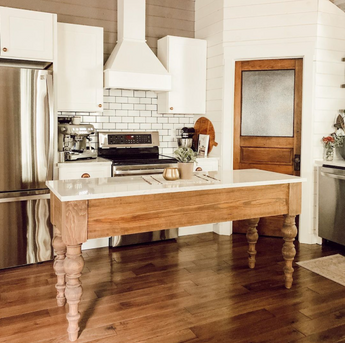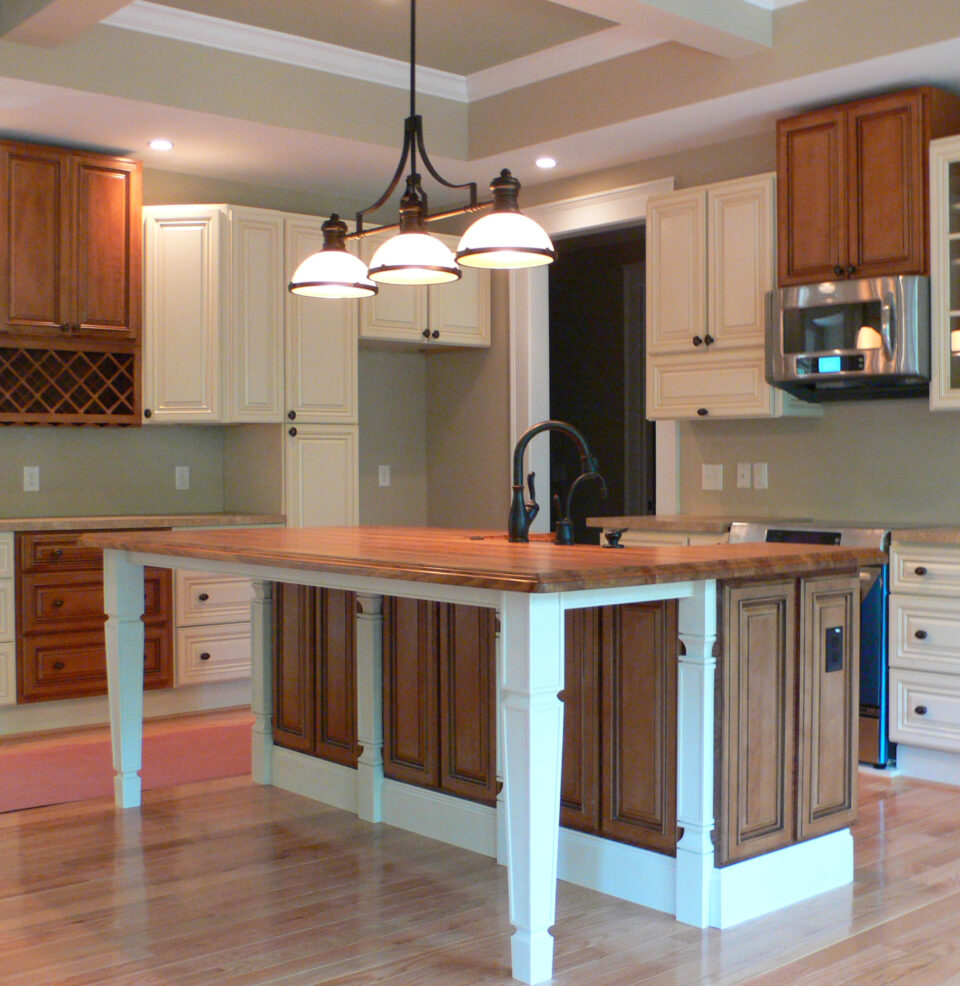The Leading Kitchen Island Leg Styles to Enhance Any Kind Of Layout Aesthetic
The Leading Kitchen Island Leg Styles to Enhance Any Kind Of Layout Aesthetic
Blog Article
The Significance of a Sturdy Cooking Area Island Leg in Producing a Practical Food Preparation Area
A tough kitchen island leg offers as an essential component in developing a practical cooking setting, providing essential assistance for both the counter top and different kitchen area activities. As cooking areas evolve into multifunctional areas for food preparation, dining, and mingling, the choice of materials and style considerations for island legs becomes progressively crucial.
Advantages of Sturdy Island Legs
Supplying essential assistance, durable cooking area island legs play a crucial role in improving the functionality and resilience of kitchen area islands - kitchen island leg. These legs not only bear the weight of the kitchen counter and any type of additional products positioned on the island, yet also add to the overall security of the framework. A well-supported kitchen area island makes sure that it stays useful and upright, also under heavy use, which is especially essential in busy kitchen atmospheres
Moreover, sturdy island legs can boost the aesthetic appeal of the kitchen. They give a solid structure that can complement numerous design styles, from modern to traditional. This flexibility permits house owners to customize their kitchen islands according to individual preference while making certain that the architectural integrity stays uncompromised.
In enhancement to their supportive function, robust cooking area island legs can also enhance security. Inevitably, investing in tough cooking area island legs is necessary for a functional and aesthetically pleasing cooking area.
Products for Kitchen Area Island Legs
When picking materials for cooking area island legs, toughness and aesthetic charm are essential variables to take into consideration. The most typical products include wood, steel, and crafted timber, each offering distinct advantages.
Wood, such as oak, maple, or cherry, is a traditional choice because of its stamina and ageless appeal (kitchen island leg). It can stand up to considerable weight and is resistant to use, making it ideal for high-use cooking area settings. In addition, wood can be discolored or repainted to enhance various kitchen designs
Steel legs, typically crafted from stainless steel or functioned iron, give a contemporary and industrial look. They are unbelievably solid and can support substantial tons while being resistant to wetness and warm, which is helpful in a cooking area. Metal legs can additionally be conveniently cleaned up, enhancing their usefulness.

Style Factors To Consider for Stability
The option of products for kitchen area island legs directly affects the layout factors to consider for security. When making a kitchen area island, it is critical to examine the weight-bearing capability of the chosen materials. Much heavier materials, such as solid timber or metal, commonly offer better security, particularly under the tension of daily usage.
Furthermore, the leg layout should incorporate correct geometry to boost security. A wider base boosts the assistance location, reducing the risk of wobbling or tipping. Consideration must additionally be offered to the height of the legs; disproportionate leg lengths can cause imbalance, jeopardizing the overall stability of the island.
Additionally, the circulation of weight throughout the island is vital. Ensuring that the leg placement lines up with the heaviest parts, such as kitchen counters and home appliances, will better enhance stability.
Maintenance Tips for Durability

Depending on the material of the legs-- whether wood, steel, or composite-- suitable cleaning approaches must be employed. Steel legs may call for a light gloss to avoid corrosion and preserve their radiance.
Additionally, tightening up screws and screws description consistently can make sure stability and prevent wobbling. Consider reinforcing the legs with additional braces or supports to boost durability if the kitchen island experiences hefty usage. Last but not least, applying a safety surface or sealer can guard versus dampness and stains, prolonging the life expectancy of the legs. By adhering to these maintenance pointers, house owners can ensure their kitchen area island legs stay robust and functional for many years to find.
Selecting the Right Leg Style
Regular maintenance guarantees that kitchen area island legs continue to be durable and useful, however selecting the ideal leg design is just as crucial for both aesthetic appeals and support. The option of leg style can dramatically influence the general layout and harmony of your cooking area.

Performance is one more important facet. As an example, thicker legs or those with a sturdy base can support much heavier countertops and devices, improving the island's utility. Alternatively, slim legs might produce a ventilated look, appropriate for lighter styles but possibly much less supportive.
Conclusion
In recap, the significance of strong helpful site kitchen area island legs can not be overemphasized in the production of a practical cooking location. These legs provide important assistance, boost stability, and add to the overall visual of the cooking area.
A tough kitchen island leg offers as a basic component in developing a practical cooking environment, offering essential assistance for both the kitchen counter and numerous cooking area tasks.Giving vital assistance, strong kitchen island legs play a critical role in improving the performance and toughness of cooking area islands. Inevitably, investing in tough cooking area island legs is crucial for a useful and aesthetically pleasing cooking location.
Factor to consider should likewise be provided to the height of the legs; disproportionate leg sizes can lead to inequality, endangering the general security of the island.
Wood legs offer warmth and a timeless look, while steel legs supply a commercial and contemporary feeling.
Report this page